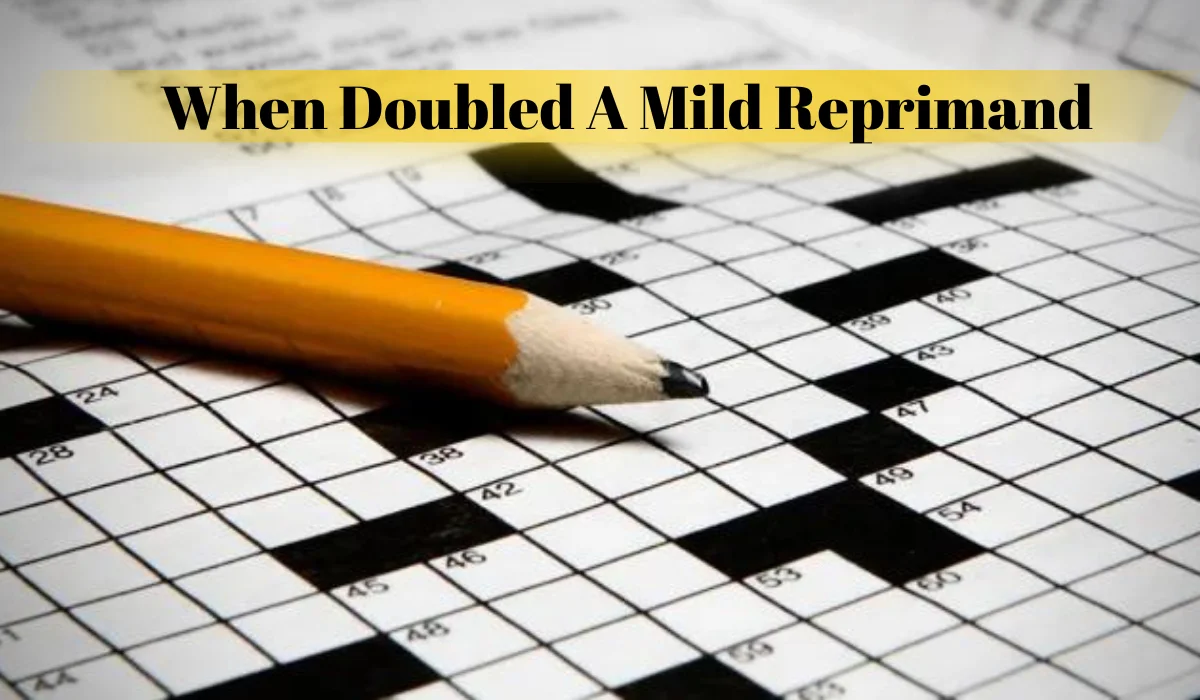Expanding into the complex maze of the human psyche, it is the purpose of “When Doubled a Mild Reprimand” to decode the mystery of this subtle yet highly effective power instrument.
Table of Contents
Introduction to Repetitive Correction-When Doubled a Mild Reprimand
Correction by repetition, which can be carried out in a mild rebuke, fits many fields of life, including child upbringing, schools, and the workplace. This concept “When Doubled a Mild Reprimand” entails the process whereby one person constantly reminds another of their blunders or of behaviours that are considered undesirable to bring a change of behaviour to meet the required standards. The constant bothering to put things right is in a way which helps to guide the learner towards the required response/ action as they internalize the correct response pattern.
The drive to discuss repetitive correction with an individual also has to do with psychological aspects that affect interpersonal relationships and personality transformation. When used appropriately, these mild rebukes help create a constructive learning climate in which test subjects can thrive.
On the other hand, if the correction focuses on repeating what was said with the intent to correct through repetition, then this approach can aggravate this problem and lead to frustrations, demotivation and negative social relations. Therefore, it is important to make corrections while maintaining some form so that the correction is helpful and does not just result in penalties out of pity.
Overall, by focusing on the specificity of such practices as repetitive correction and when doubled mild reprimand, the subject can better understand the context of conflicts and related behaviours.
The Psychological Impact of Repetitive Correction-When Doubled a Mild Reprimand
The psychological consequences of repetitive correction-when doubled a mind reprimand, often referred to as mild reprimands, can be very significant and can marginalize different aspects of an individual’s mental and emotional health. Taken to the second power, a mild rebuke means that a child cannot only change their behaviour in the short term but also be affected in terms of self-esteem, motivation, and more in the long term.
There is evidence that displays of minor punishments, when given continuously, are likely to lead to low self-esteem. Such people may be compelled to retreat from acknowledging or even accepting a challenge as they are constantly reminded and corrected. They may employ a pattern of perfectionism, and as a result, they may feel that they never do enough. This can be rather damaging in designated areas such as academic institutions and corporate undertakings where assurance significantly influences productivity and creativity.
Furthermore, motivation is not a small change; it affects anger as well. Introducing several correct cycles causes learners to lose their incentives to perform activities and intrinsic motivation. Yet, the persons may become extrinsically inspired; thereby, they will be motivated by the intention to avoid more scoldings. This shift may lead to the general circulation of less energy and enthusiasm, and there is a possibility to make a change from activity to passivity and from taking risks.
As for behaviour, moderate scolding can result in obedience – but in return for inspiration, initiative and desire, doubled or when applied as often as possible. People stay innovative only by following strict guidelines, even if they have to avoid corrections for any wrong thing they are doing. In the long run, it fosters an environment of compliance, compliant employees who are motivated not by the desire for greater performance, productivity or innovation but by a fear of reprisal.
For anyone or any organization desiring to employ corrective feedback most efficiently while at the same time avoiding chasing the intended imbiber away, these psychological impacts need to be understood. It is equally important to correct in a manner that is constructive and reinforces the positive behaviour in a learner or assist in developing the correct behaviour as it is to punish for misconduct. Like any form of punishment, scolding erodes resilience, and it is therefore important to use positive incentives before or after reprimands.
Strategies for Effective Repetitive Correction-When Doubled a Mild Reprimand
Ineffective pecuniary sanctions involve too frequent a delivery of correction and thus require the ability to understand psychology so that the delivery does not lead to resentment, such as the use of constructive criticism. This is one of the main strategies used in the business. Actual constructive criticism involves identifying specific parts of performance that require enhancement as compared to criticism that targets a person. For example, instead of uttering the phrase, “You always make mistakes”, an appropriate manner to express the issue would be, “I observed some mistake in this area; perhaps you let me demonstrate the right procedure. ”
Another important aspect is communication, and recommendation setting is an essential part of it. Returning to the same topic frequently can be frustrating to the learner as they need help to grasp the correct meaning from the instructor, and corrections may appear as needless harsh reactions. Realistic expectations are understandable and show the great steps that a person can take to achieve the goal. For instance, educators should explain prescriptive academic performance in a tangible and specific way, such as outlining certain standards.
A friendly environment should be maintained to reduce the effects of prompted psychological traits and repetitive correction. This involves designing an environment that fosters the growth of people and allows for accepting errors for learning rather than punishment. This could be correcting the child while giving them encouragement and all the positive things they need to hear. To mitigate the problem, managers could adopt an open-door policy whereby employees could walk into the manager and talk about their woes and get advice whenever they want to without any restrictions.
Incorporating constructive feedback, clear delineation of expectations, and a positive setting, parents, teachers, and managers are capable of offering repetitive correction-“When Doubled a Mild Reprimand” enforcement whereby corrections lead to positivity. It should be noted that such strategies help not only to improve performance and learning activities but also create a more satisfying and efficient working environment.
Conclusion
Thus, to sum up, it is very important to comprehend why this lion corrects and why he doubles the correction of others, which will consequently contribute to further successful character building. Incorporating constructive feedback, clear delineation of expectations, and a positive setting, parents, teachers, and managers are capable of offering repetitive correction. “When Doubled a Mild Reprimand” is a perfect strategy for positive learning outcomes. Expert is still an invaluable tool when applied in the right manner, promoting the accomplishment of changes.
However, it is equally essential to remember that too much correction may not have desirable effects on the child. It is an art to find the right balance in achieving all these objectives to improve learning and development without creating room for complaints or the likelihood of giving up.
Ultimately, six recommendations can be derived from the current discussion: Emotional sensitivity, Concern and careful choice of words, repetition using factual statements, and Acknowledgment of the positive aspects of the employee’s work. From this point of view, they can realize the fact that when corrective feedback is provided from a different perspective, it means that correctional conversation can be constructive and not negative. As with the other parts of the CPI model, understanding that such signs exist can help improve the form of feedback.
FAQs
How can my corrections have a negative impact?
In this case, there are bound to be negative impacts of corrections that the receptionist can determine through changes in the attitude and behaviour of the recipient. Some of the changes to watch out for include inattentiveness, restlessness, irritability, procrastination, or mood swings. These cues should be preeminent for them to be communicated, and thus, there should be openness in communication to make adjustments when necessary.
What are some signs of effective correction?
It is generally used by observed reactions to show improvement in the workforce capacity, improved confidence and willingness to undertake tasks. The feedback displayed by the recipient should also show comprehension and utilization of the feedback offered, in addition to displaying a positive attitude toward learning and growth.
How often should I provide corrective feedback?
The frequency of corrective feedback should be reasonably high but, at the same time, not lead to overloading the recipient. It is possible to make corrections assertively with the learners without compromising the quality of the learning process if the feedback is offered periodically and proactively. Real-time feedback is especially valuable in terms of consistent “feedback checkpoints,” but constant correction can negatively impact morale and motivation.
Meanwhile, using these techniques and comprehending the rationale behind repetitive correction-When Doubled a Mild Reprimand and the potential inefficiency of criticism as a motivator, one can create conducive conditions for personal and professional development.






